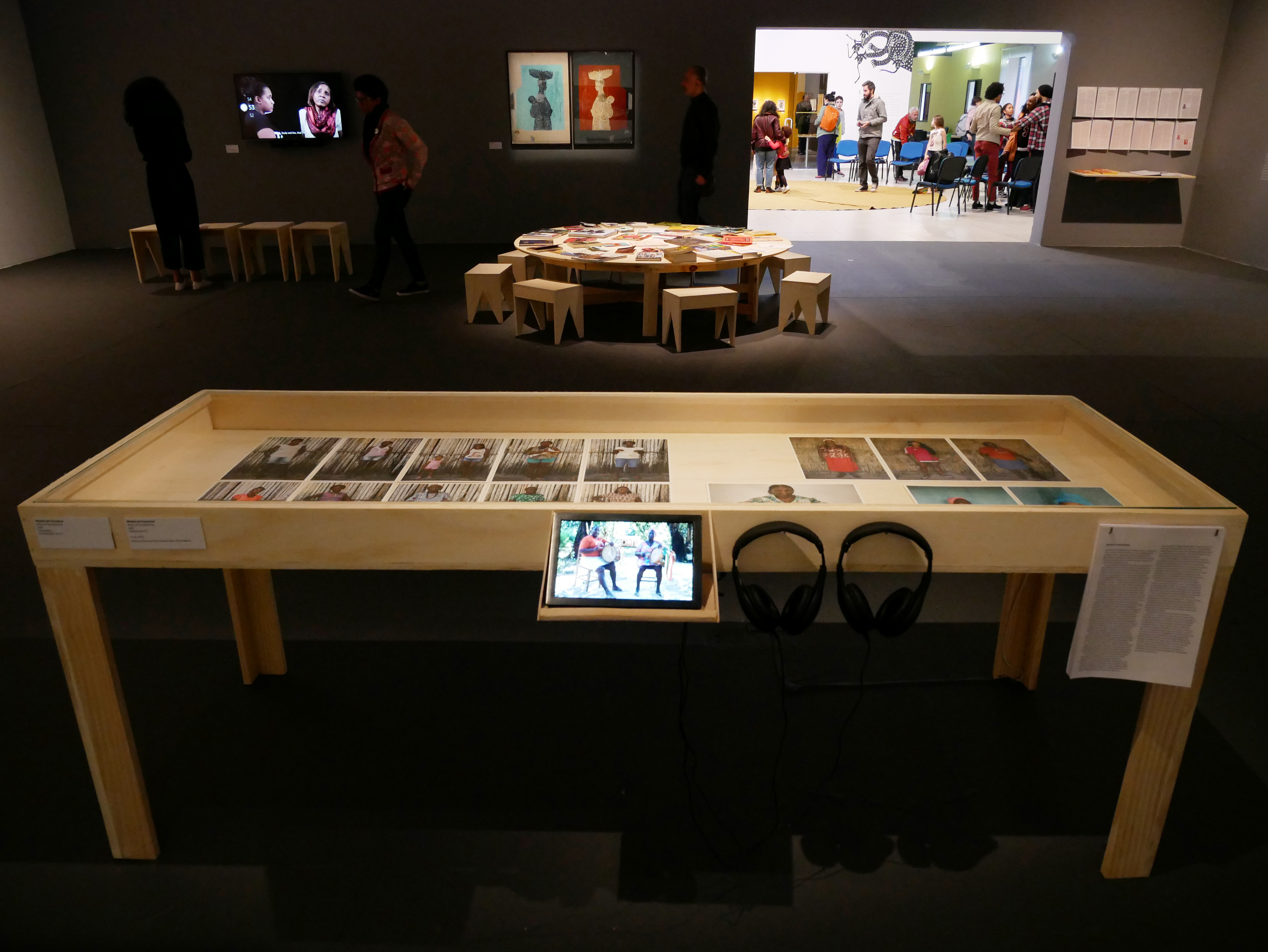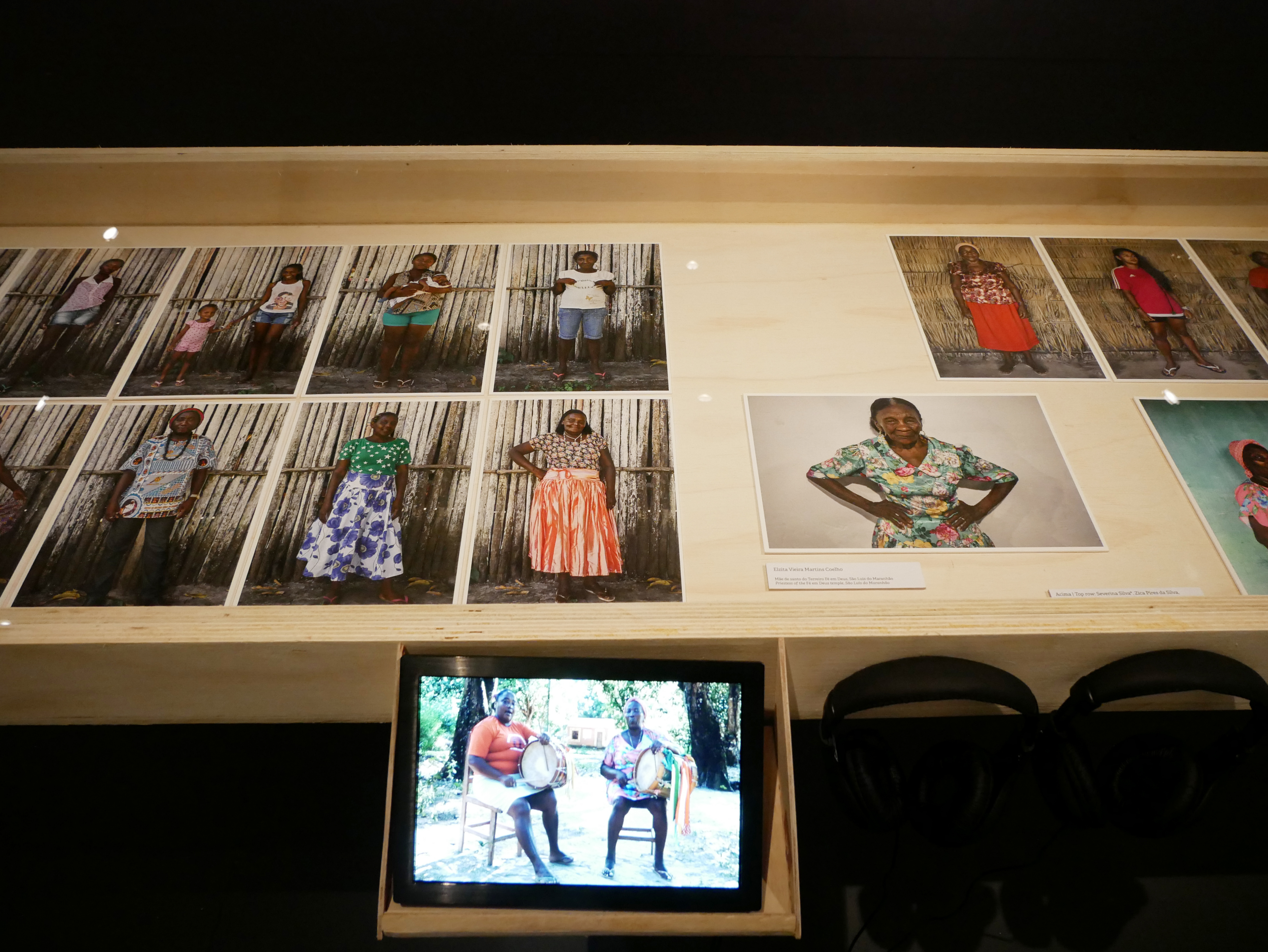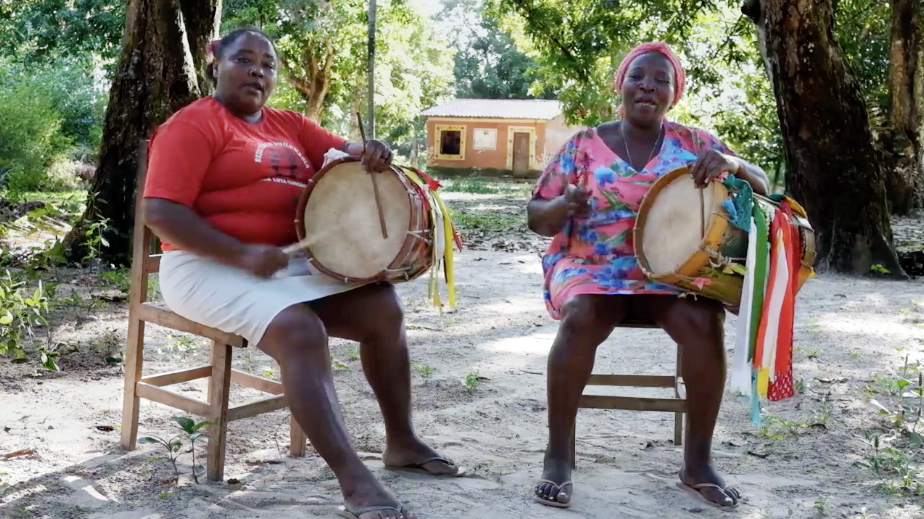In São Luís, in the state of Maranhão in northern Brazil, we approached maroon communities where the struggle for Black memory, the right to the land and the respect for diversity and different modes of living are intertwined. The practice of encantaria, which permeates all actions of resistance in the region is strongly rooted in the religious practices of the African matrix unique in Brazil, and is embodied in the centuries old knowledge of the enchanted midwives in maroon communities. These midwives are equally responsible for the processes of physical of spiritual healing and for channeling spirits in the cycles of life and death. The midwives also represent an expanded definition of Black motherhood that encompasses the communalistic care of children.
Maroon communities stand for Black political autonomy and of Afro-Brazilians as a free people struggling for its rightful ownership of the land and its resources. These communities, numbering hundreds in the state of Maranão alone are the frontier of resistance against forces of cultural, economical and political exploitation by governments, mining companies, and agricultural busines alike.
The photographs portray each of the midwives in the community of Santa Rosa dos Pretos, and the video shows two leaders of the same community playing Tambor de Mina, a unique musical style from Maranhão based on percussion and chanting known to descend directly from African ancestors with few alterations, in a unique chant for this project.
Ways of Enchanting
by Isabel Löfgren and Patricia Gouvêa
Maroon communities are ethno-racial enclaves based on a communalistic use of land based on ancestry, kinship and specific cultural traditions. They express the resistance to different forms of domination, and the regulation for land ownership is guaranteed by the Brazilian constitution.
The maroon community Santa Rosa dos Pretos (or Santa Rosa do Barão) is located in the municipality of Itapecuru-Mirim, in the state of Maranhão. The territory extends for 6km along federal highways, 100km from the state capital, São Luiz. The Santa Rosa plantation once belonged to Joaquim Raimundo Nunes Belfort, the Baron of Santa Rosa (1820-1898). After the abolition of slavery in 1888, the ex-slaves continued to work on the property, and became associates, and after the Baron’s death, they were granted permanent use of the land for themselves and their descendants.
Known for social cohesion, plurality and strong cultural belonging, this community is considered a national and regional reference among the surviving maroon communities. In 2008, 326 families were officially registered in a territory of 7,5 thousand hectares. Even though the land ownership process is at an advanced stage according to recent legislation, there is still a struggle until the property title is officially transferred to the community.
The female leaders of this community fight to keep families together and owning their own land which are constantly being threatened by pressure from land speculators and mining companies. The extraordinary resilience of these women is a key in the struggle for maintaining a collective use of the land, and in maintaining ancestral knowledge alive through generations.
The Quilombo Santa Maria dos Pretos, located nearby, consists of five communities: Santa Maria dos Pretos, Piqui, Santa Joana, Morros and Mandioca. The quilombo was formed along the banks of the Itapecuru River in the 1830s, when the plantation owner Maria Rita Gomes Belfort transferred part of her property and farming equipment to 83 enslaved and their descendants upon her death. Today, as before, the maroons claim that their ancestors received the land as compensation for slave labour, and not as a donation or an act of good will from their former mistress.
With a tradition of awareness about their right to ancestral lands coupled with the constant invasions and unlawful occupations of their territories, the maroons from these communities united in 2003 to claim the official ownership of their land. They succeeded in obtaining a certificate of self-recognition as a maroon community by the Palmares Cultural Foundation one year later. In 2014, permanent property titles were issued to the communities.
The knowledge of medicinal plants is so important and well known among maroons in the region, that in 2003 João Batista Souza Pereira, a midwife and priest at the Terreiro de Mina in the Santa Joana community, was invited to a Unicef symposium on the subject. On this occasion, proposals for expanding the use of phytotherapic medicine in the communities were discussed. Maria Catarina Sousa dos Santos is one of the midwives in Santa Joana, who combines medicinal plants with knowledge from the traditions of encantaria, which is connected with traditional Afro-Brazilian practices of spiritual and physical healing.
The connection between these rural communities and the capital city can be made through Dona Elzita Vieira Martins, the leader and priestess at Terreiro Fé em Deus for the last 50 years. Born in 1934, she was initiated on the tradition of Tambor de Mina by her predecessor Denira Ferreira de Jesus, and upon her death took over leadership as an “obligation” to the deities by founding a new terreiro in the neighbourhood of Sacavém. Mãe Elzita’s importance as a healer is connected to the care provided in the local community. As a religious leader, she can reach beyond traditional medicine and offer support and care for her followers in alleviating their emotional, psychological and spiritual ailments.
August 2018



